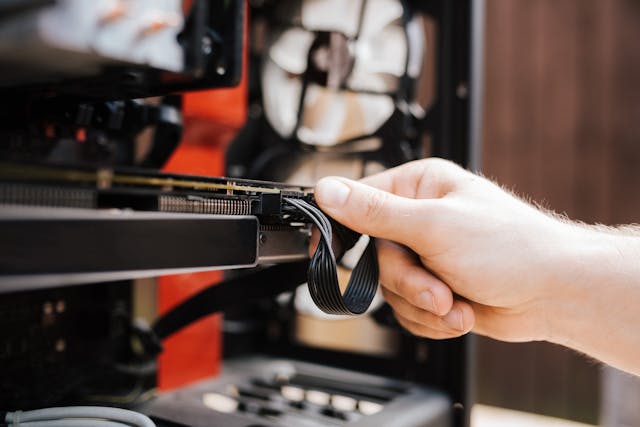Maintaining your equipment is critical to keeping your business running smoothly. Equipment maintenance helps prevent costly repairs, reduces downtime, and keeps machines operating at peak efficiency. Without regular upkeep, even the best equipment will wear down and fail over time. A proper maintenance routine can save you time, money, and frustration.
Many businesses only think about maintenance when a machine breaks down. However, proactive care is much more effective than reactive fixes. Regular maintenance is key to preventing breakdowns, ensuring optimal performance, and extending the lifespan of your machinery.
The Importance of Regular Equipment Maintenance
Routine maintenance is essential for several reasons. First, it keeps your machines running smoothly, minimizing disruptions to your operations. Well-maintained equipment requires fewer repairs, which reduces costs and keeps your business more productive.
Second, equipment ensures the safety of your employees. Machines that are not regularly serviced can become dangerous, leading to accidents in the workplace. By inspecting and maintaining your machines regularly, you can prevent breakdowns and keep your workplace safe.
Additionally, regular maintenance extends the lifespan of your machines. Equipment is a major investment, so it makes sense to take care of it. A well-maintained machine will last longer and perform better over time. This prolongs the return on your investment and helps your business run more efficiently.
Key Steps for Effective Machine Maintenance
Effective continuous improvement involves a few basic steps that every business should follow. By incorporating these practices into your maintenance routine, you can maximize the lifespan and performance of your machines:
-
Routine Inspections:
Regular visual inspections help you spot potential problems before they become serious. Check for signs of wear, leaks, unusual noises, or loose parts. Address these issues early to prevent breakdowns.
-
Lubrication and Cleaning:
Proper lubrication is critical to reducing friction and wear on moving parts. Make sure all moving components are adequately lubricated. In addition, regular cleaning keeps dirt, debris, and contaminants from causing problems inside the machine.
-
Replacing Worn Parts:
No matter how well you maintain your machines, some parts will eventually wear out. Replace worn components promptly to avoid further damage and potential breakdowns. Keep spare parts on hand for common wear items.
-
Calibration and Alignment:
Machines can gradually fall out of calibration or alignment over time. Regularly check and adjust these settings to maintain accurate and consistent operation.
-
Proper Documentation:
Keep detailed records of all maintenance activities, including inspections, repairs, and part replacements. This will help you stay on top of scheduled maintenance and track the overall health of your machines.
Common Equipment Maintenance Mistakes to Avoid
While maintaining your equipment is vital, there are common mistakes that can undermine your efforts. Here are some errors to watch out for:
-
Neglecting Preventive Maintenance:
Skipping scheduled maintenance is a costly mistake. Even if a machine seems to be working fine, regular care is essential to prevent bigger issues down the road.
-
Using Incorrect Parts:
Always use the right parts for repairs. Using cheap or incorrect components can lead to premature wear or cause additional damage.
-
Inadequate Training:
Operators should be trained not only to run the equipment but also to identify when something is wrong. Proper training helps prevent misuse and ensures equipment is handled with care.
-
Ignoring Manufacturer Guidelines:
Manufacturers provide specific maintenance guidelines for a reason. Ignoring these recommendations can lead to improper servicing, which increases the risk of breakdowns.
By avoiding these common mistakes, you can ensure your equipment remains in excellent condition and avoid unnecessary repairs.
How Regular Equipment Maintenance Saves Time and Money
Investing in regular maintenance saves time and money in the long run. Machines that are properly maintained break down less often. This reduces downtime and keeps production on track.
When equipment runs efficiently, it also uses less energy. Regular maintenance helps optimize machine performance, which lowers energy consumption and reduces operating costs. Additionally, catching minor problems early prevents them from turning into costly repairs or complete failures.
While there’s a cost associated with maintenance, it’s a fraction of what you would spend to replace or repair a broken-down machine. This preventive approach minimizes long-term expenses and ensures your business continues to operate smoothly without costly interruptions.
Best Practices for Machine Maintenance in the Workplace
To get the most out of your machine maintenance routine, follow these best practices:
-
Create a Maintenance Schedule:
Develop a consistent maintenance schedule based on manufacturer recommendations and the specific needs of your equipment. This schedule should cover routine inspections, lubrication, cleaning, and part replacements.
-
Train Your Team:
Make sure your employees understand the importance of equipment. Provide training on how to identify early warning signs of issues and how to perform basic maintenance tasks.
-
Use Quality Parts and Supplies:
Invest in high-quality replacement parts and maintenance supplies. Cheap parts may seem like a good idea initially, but they can lead to bigger issues down the line.
-
Track Maintenance History:
Keep detailed records of all maintenance activities. This helps you identify recurring problems and better plan for future repairs or replacements.
By following these practices, you can improve machine performance, reduce downtime, and extend the lifespan of your equipment.
Conclusion:
Equipment maintenance is essential for ensuring that your machines operate efficiently, safely, and reliably. Neglecting regular maintenance can lead to costly repairs, downtime, and safety risks. By adopting a proactive approach to machine maintenance, you’ll reduce long-term costs and maximize the lifespan of your equipment.






